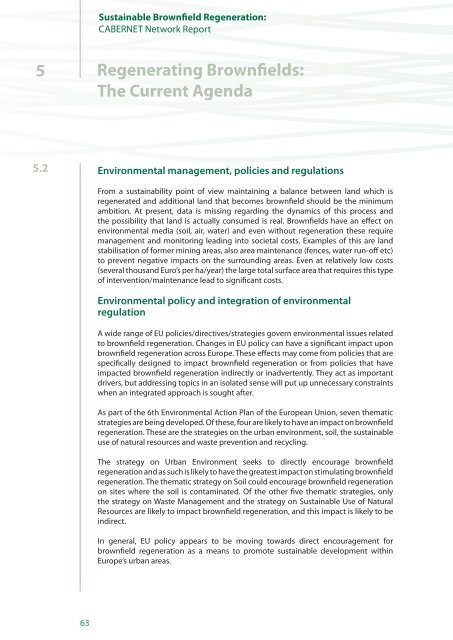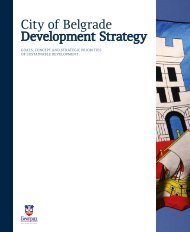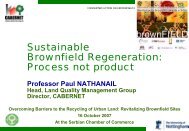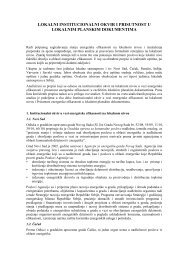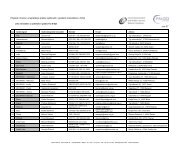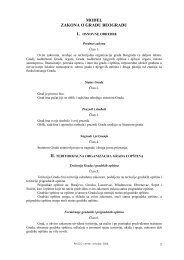Sustainable Brownfield Regeneration: CABERNET Network Report
Sustainable Brownfield Regeneration: CABERNET Network Report
Sustainable Brownfield Regeneration: CABERNET Network Report
Create successful ePaper yourself
Turn your PDF publications into a flip-book with our unique Google optimized e-Paper software.
<strong>Sustainable</strong> <strong>Brownfield</strong> <strong>Regeneration</strong>:<strong>CABERNET</strong> <strong>Network</strong> <strong>Report</strong>5Regenerating <strong>Brownfield</strong>s:The Current Agenda5.2 Environmental management, policies and regulationsFrom a sustainability point of view maintaining a balance between land which isregenerated and additional land that becomes brownfield should be the minimumambition. At present, data is missing regarding the dynamics of this process andthe possibility that land is actually consumed is real. <strong>Brownfield</strong>s have an effect onenvironmental media (soil, air, water) and even without regeneration these requiremanagement and monitoring leading into societal costs. Examples of this are landstabilisation of former mining areas, also area maintenance (fences, water run-off etc)to prevent negative impacts on the surrounding areas. Even at relatively low costs(several thousand Euro’s per ha/year) the large total surface area that requires this typeof intervention/maintenance lead to significant costs.Environmental policy and integration of environmentalregulationA wide range of EU policies/directives/strategies govern environmental issues relatedto brownfield regeneration. Changes in EU policy can have a significant impact uponbrownfield regeneration across Europe. These effects may come from policies that arespecifically designed to impact brownfield regeneration or from policies that haveimpacted brownfield regeneration indirectly or inadvertently. They act as importantdrivers, but addressing topics in an isolated sense will put up unnecessary constraintswhen an integrated approach is sought after.As part of the 6th Environmental Action Plan of the European Union, seven thematicstrategies are being developed. Of these, four are likely to have an impact on brownfieldregeneration. These are the strategies on the urban environment, soil, the sustainableuse of natural resources and waste prevention and recycling.The strategy on Urban Environment seeks to directly encourage brownfieldregeneration and as such is likely to have the greatest impact on stimulating brownfieldregeneration. The thematic strategy on Soil could encourage brownfield regenerationon sites where the soil is contaminated. Of the other five thematic strategies, onlythe strategy on Waste Management and the strategy on <strong>Sustainable</strong> Use of NaturalResources are likely to impact brownfield regeneration, and this impact is likely to beindirect.In general, EU policy appears to be moving towards direct encouragement forbrownfield regeneration as a means to promote sustainable development withinEurope’s urban areas.63


